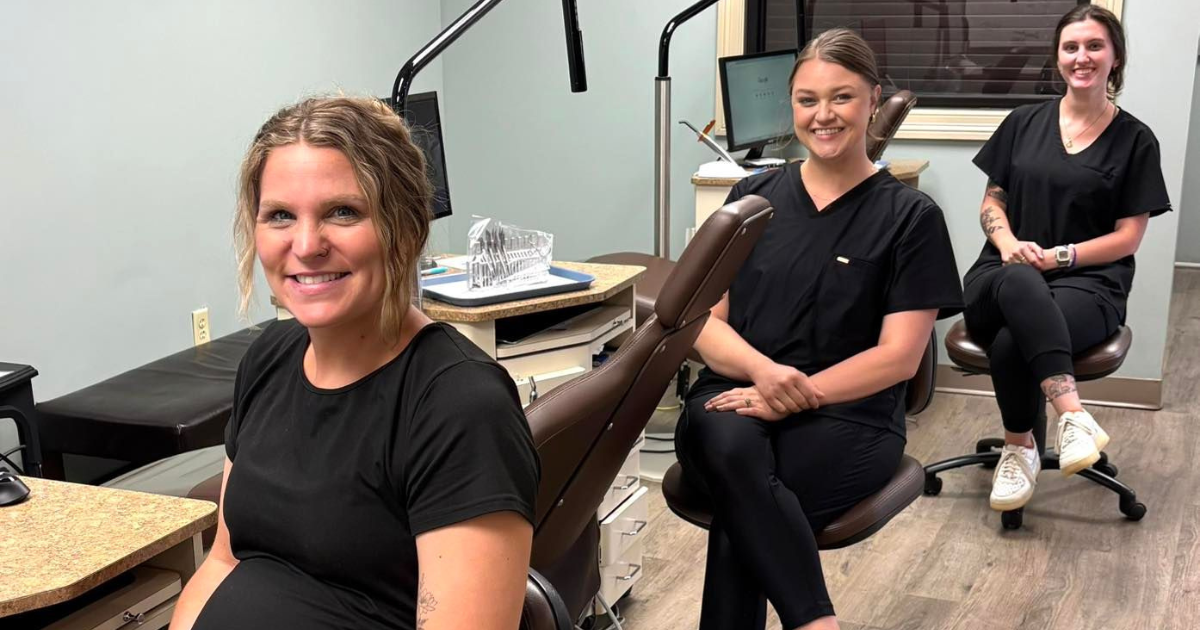If you’re considering orthodontic treatment (like braces or Invisalign®) for yourself or your child, one of your first questions might be: “Does my dental insurance cover orthodontics?”
The good news? In many cases, orthodontic coverage can make a beautiful smile much more affordable!
At GO Orthodontics, we don’t want you to feel confused or overwhelmed about paying for orthodontics, or what your insurance covers. We’re here to help you understand how dental insurance works for orthodontics and what your specific plan covers.
We’re proud to accept most dental and orthodontic insurance plans—and on your first visit, our expert team will help you get the most out of your benefits!
TL;DR: Dental and Orthodontic Insurance: How does it work?
- • Orthodontic coverage meaning: ‘Orthodontic coverage’ refers to insurance benefits that help pay for braces, Invisalign, and appliances like palate expanders.
- • Worth it? Usually yes—just watch for waiting periods, deductibles, and lifetime maximums.
- • Dual dental insurance coverage: Can help but won’t always double your benefits—secondary insurance only supplements your primary plan.
- • Plans vary: You might have a fixed copay, a set percentage with a lifetime max, or percentage-only coverage.
Ready to learn how your specific insurance would work for your smile journey? Schedule your complimentary exam with GO Orthodontics in Saltillo, Corinth, Collierville, Southaven or Oxford today!
What Does Orthodontic Insurance Cover?
Before starting treatment, it’s a good idea to check your orthodontic coverage details. Just because you have dental insurance doesn’t mean orthodontics is automatically included.
Here’s how to find out:
- • Call the customer service number on the back of your dental insurance card (or check your online account if you don’t have a card).
- • Ask for a Summary of Benefits and look for a section titled “Orthodontia”—this will outline what your plan covers, how much it will pay, and any limitations.
Tip: In insurance terms, “orthodontia coverage” usually refers to treatment like braces, Invisalign, and orthodontic appliances.
If you know that you have insurance, but aren’t sure what your specific plan covers, please don’t hesitate to reach out to us! We’re here to help you.
Is Orthodontic Insurance Worth It?
Absolutely! For many patients, having orthodontic insurance significantly reduces the cost of treatment. But not all plans are created equal. When choosing coverage, keep these points in mind:
- • Don’t wait until the last minute – Many plans have a waiting period before orthodontic benefits begin.
- • Understand the waiting period – Ask your carrier how long it will be before your orthodontia coverage kicks in.
- • Be mindful of cheap plans – Lower premiums might also mean limited coverage or high out-of-pocket costs.
- • Check deductibles and copays – Make sure they fit your budget.
During your complimentary consultation, our team will review your insurance benefits and payment options with you so you know exactly what to expect.
Dual Dental Insurance Coverage for Orthodontics: Pros & Cons
It’s common for patients to wonder: “Can I use two dental insurances for braces?” The answer is yes, but with important caveats. Many assume dual coverage means 100% of costs are covered, but that’s rarely the case.
When you have two plans, they work together through a coordination of benefits (COB) process. Here’s an example of this:
Sarah’s Story
- • Plan A (primary) covers 50% of orthodontic treatment after a $1,000 deductible. Her treatment costs $6,000.
After paying the $1,000 deductible, Plan A covers 50% of the remaining $5,000, leaving her with $2,500 still to pay. - • Plan B (secondary) covers 30% after a $1,500 deductible.
After paying that deductible, Plan B covers 30% of the remaining $1,000—just $300.
Sarah’s out-of-pocket cost: $2,200, even with two insurances.
This shows why secondary dental insurance for orthodontics is meant to supplement, not fully replace, your out-of-pocket costs. Our insurance coordinators will walk you through an exact breakdown of your unique coverage before your treatment begins.
How Orthodontic Insurance Plans Work
Every plan is different, but here are the most common types of orthodontic benefits:
- 1. Percentage with a Lifetime Maximum
- • Example: 50% coverage up to $3,000 per person.
- • If you hit your lifetime maximum before treatment ends, you pay the remaining balance.
- • Important: This maximum is usually per person, not per plan year.
- 2. Fixed Copay
- • You pay a set amount (for example, $1,000) and the insurance covers the rest.
- 3. Percentage-Only Coverage
- • Example: Insurance covers 60%, you cover the remaining 40%.
Common Orthodontic Insurance Questions
When it comes to dental and orthodontic insurance, there are a few things to know before starting treatment. Having these answers upfront can help you feel confident about your coverage, your budget, and your smile journey.
These are some more of the questions that people also ask us:
- • Do braces count toward my insurance deductible?
Depending on your specific insurance plan, braces treatment may contribute toward your deductible. - • Will insurance pay for braces twice?
Usually, lifetime maximums apply per person, so if you’ve used your orthodontic benefit before, you may not be eligible again. - • Why aren’t braces covered by insurance?
Some dental plans (like Medicaid) focus only on preventive and basic care. You may need supplemental dental insurance for braces. - • Does insurance cover a palate expander?
Often yes, but coverage can vary by plan.
Affordable Orthodontic Care with GO Orthodontics
At GO Orthodontics, we’re in-network with most major insurance plans—including Cigna, GEHA, and Delta Dental, just to name a few! Even if we’re listed as an “out-of-network” provider for your plan, our team can still file your claims for you and help you get the maximum benefit available.
Things to know about in-network vs. out-of-network:
When it comes to orthodontic insurance, the difference in cost is often less than you might expect so don’t let “out-of-network” scare you away from starting treatment.
At your first visit, a member of our team will help you:
- • Understand what orthodontia covers in your plan.
- • Maximize your benefits.
- • And find a flexible payment plan for any remaining balance.
Whether you need braces, Invisalign, or other orthodontic treatment, we’re here to make it as affordable and stress-free as possible.
Ready to get started?
If you still have questions or concerns about the various financing options or coverage for your orthodontic treatment, our team would be more than happy to speak with you!
Are you ready to transform your smile with high-quality, affordable orthodontic care? Schedule your first appointment with one of our highly-experienced orthodontists in Saltillo, Corinth, Collierville, Southaven or Oxford. We have a conveniently-located orthodontic office near you!


